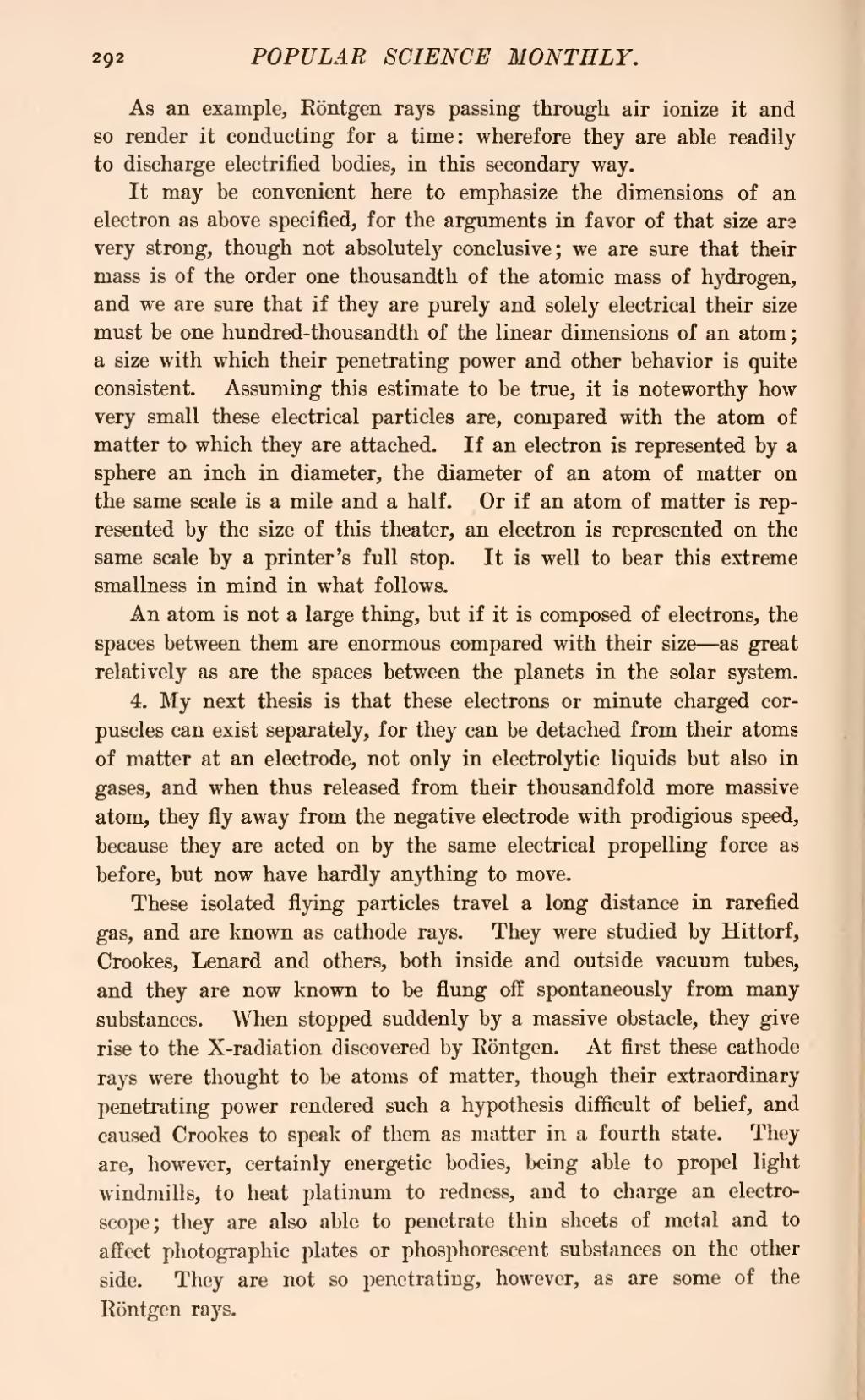As an example, Röntgen rays passing through air ionize it and so render it conducting for a time: wherefore they are able readily to discharge electrified bodies, in this secondary way.
It may be convenient here to emphasize the dimensions of an electron as above specified, for the arguments in favor of that size are very strong, though not absolutely conclusive; we are sure that their mass is of the order one thousandth of the atomic mass of hydrogen, and we are sure that if they are purely and solely electrical their size must be one hundred-thousandth of the linear dimensions of an atom; a size with which their penetrating power and other behavior is quite consistent. Assuming this estimate to be true, it is noteworthy how very small these electrical particles are, compared with the atom of matter to which they are attached. If an electron is represented by a sphere an inch in diameter, the diameter of an atom of matter on the same scale is a mile and a half. Or if an atom of matter is represented by the size of this theater, an electron is represented on the same scale by a printer's full stop. It is well to bear this extreme smallness in mind in what follows.
An atom is not a large thing, but if it is composed of electrons, the spaces between them are enormous compared with their size—as great relatively as are the spaces between the planets in the solar system.
4. My next thesis is that these electrons or minute charged corpuscles can exist separately, for they can be detached from their atoms of matter at an electrode, not only in electrolytic liquids but also in gases, and when thus released from their thousandfold more massive atom, they fly away from the negative electrode with prodigious speed, because they are acted on by the same electrical propelling force as before, but now have hardly anything to move.
These isolated flying particles travel a long distance in rarefied gas, and are known as cathode rays. They were studied by Hittorf, Crookes, Lenard and others, both inside and outside vacuum tubes, and they are now known to be flung off spontaneously from many substances. When stopped suddenly by a massive obstacle, they give rise to the X-radiation discovered by Röntgen. At first these cathode rays were thought to be atoms of matter, though their extraordinary penetrating power rendered such a hypothesis difficult of belief, and caused Crookes to speak of them as matter in a fourth state. They are, however, certainly energetic bodies, being able to propel light windmills, to heat platinum to redness, and to charge an electroscope; they are also able to penetrate thin sheets of metal and to affect photographic plates or phosphorescent substances on the other side. They are not so penetrating, however, as are some of the Röntgen rays.
